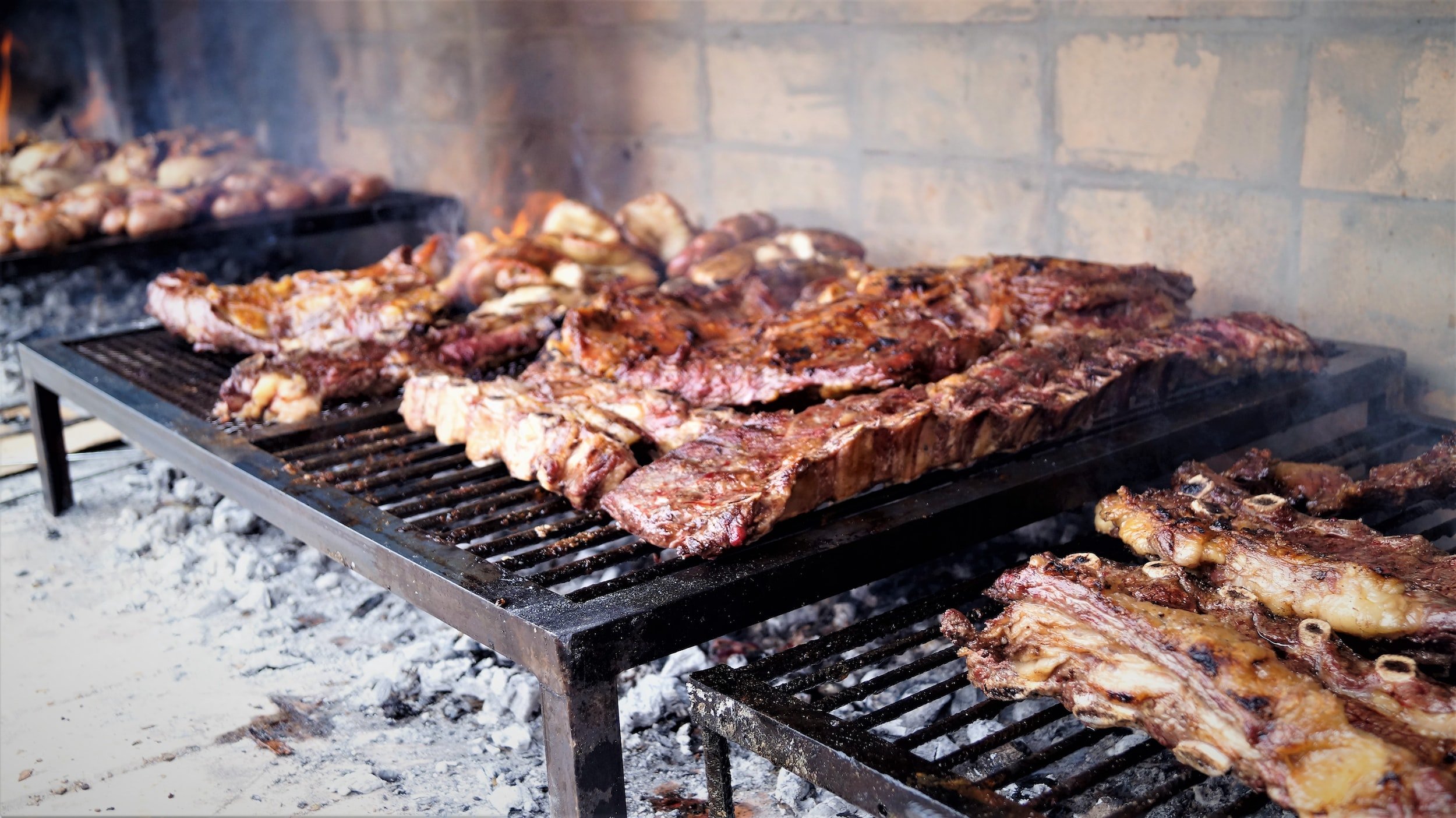My Favourite Things To Do In Buenos Aires
Argentina is a country that welcomes you to enjoy yourself, to socialise and to spend time with the locals. The traditions of eating asado and drinking maté attest to this. The capital city Buenos Aires is a symbol of Argentina’s history and traditions and is waiting to wow you with; an incredible history, sumptuous food and quality wine. Buenos Aires is a city that is constantly moving, whether dancing the tango around street corners and through cobbled streets or into the early hours in one of the many nightclubs. The following are my favourite things to do and see, in one of my favourite cities in the world.
PLAZA DE MAYO
Plaza de Mayo is about much more than the colourful Casa Rosada that may draw the majority of your attention. If you can take your eyes off this stunning building and look towards the ground you will notice the white scarves painted in the square. These scarves represent Las Madres de Plaza de Mayo, a group of mothers and grandmothers who meet weekly in the square to protest. They are the parents and grandparents of the disappeared generation, 30,000 young people who went missing during the Dirty War.
Similarly, you will find disgruntled Falklands war veterans who have a camp manned 24/7 in the Plaza de Mayo. The veterans of the Falklands war are found here protesting for recognition of their efforts during the Atlantic conflict.
Ultimately, your attention will wander towards the pink house that stands proudly at the east end of the Plaza de Mayo. Casa Rosada itself is unique in its appearance from the surrounding buildings with its baby pink colour setting it apart. The balcony famous for the speech of Eva Perón is clearly visible from the square. Casa Rosada maintains a political significance as the workplace of the Argentinian President.
LA BOCA DISTRICT
I am not sure I have been to an area of a city that more accurately suits the word vibrant. From the colourful buildings to the atmosphere of music and celebration, La Boca is my favourite part of the city. Renowned for Caminito Street, a street lined with buildings painted in the brightest; reds, yellows, blues and greens, La Boca is a fantastic area to take photographs.
Although La Boca is a district famous for welcoming tourists it also has a rough reputation. It is fair to say that La Boca is one of the poorer working-class areas of the city. Nothing represents this area better than La Bombonera, home of Boca Juniors and a place of worship for the local community. Boca as a team is true to its routes, famous for its dogged, hard-working style of play. Like most tourist areas, crime is possible in La Boca with pickpockets operating in the area and people advise to leave before dark. But my experiences in this area were positive, with memories of celebration and community.
WATCH A FOOTBALL MATCH
Argentina is a football country and Buenos Aires is a football city, there really is no debate in this regard. Football is a way of life for many Argentines and having the opportunity to watch a live match in Buenos Aires was a great experience. There are six teams in the Argentine Primera División that are based in Buenos Aires, including the two most successful; Boca Juniors and River Plate.
You will need to choose a side to follow in this debate and once you have it is impossible to switch back. The rivalry is stronger than anything we experience between European football teams. This is part of what makes attending a Primera División match such a spectacle. The supporters are so passionate about their team and there is a true party atmosphere in the stands.
I was fortunate to see a local derby between Boca Juniors and Vélez Sarsfield at La Bombonera during my stay in Buenos Aires. As a season ticket holder at a UK football team and having watched matches all over Europe, I can honestly say nothing has compared to the experience of standing behind the goal in La Bombonera. The noise in the stadium is incredible and as the fans jump it feels like the stadium is moving beneath your feet.
Sadly, tickets are no longer sold directly outside of membership schemes so it is likely you will need to purchase one through an agency at an inflated price.
AVIENDA CORRIENTES
What feels like the centre of Buenos and the meeting point for many important streets is Avienda Corrientes or Corrientes Avenue. Contentious when it was planned, the widening of Corrientes Avenue only eventually happened following the Coup d’ètat in 1930. Extending 69 blocks, this main thoroughfare for traffic in the capital leads off to some of the most important streets in the city.
Stood tall at 67.5m (221ft) in the centre of Corrientes Avenue is the Obelisco de Buenos Aires. The Obelisk not only commemorates important past dates with inscriptions but is used as a symbol for current celebrations or commemorative occasions. In potentially the most unique of these occasions, the Obelisk was decorated as a condom for World AIDS Day in 2005.
EAT EMPANADAS
Empanadas are synonymous with Argentina and vendors can often be found on every street. Coming in a variety of flavours, empanadas are essentially baked dough with a filling inside. This can be anything from beef to cheese or chillies to a pumpkin. A trip to Buenos Aires wouldn’t be complete with trying empanadas and luckily for you, they won’t be hard to find.
Photo Credit: @eejermaine
SAN TELMO MARKET
If you are into street music, good food and souvenir searching then San Telmo’s market could be just the activity for you. Operating on Sunday the market is popular with both patrons and pickpockets, so be wary of your belongings. The atmosphere is pleasant and relaxed with street performers and places to sit and eat.
If you can’t make the Sunday market then there is an indoor market that operates throughout the week. This large indoor market opened in 1987 to cater to European immigrants and has been running ever since. The Mercado de San Telmo is more food orientated than the Sunday market.
TANGO
Tango is everywhere in Buenos Aires, it is impossible to escape it, with that in mind you may as well throw yourself in with both feet. There are plenty of opportunities to learn to Tango or you can just sit back and watch the dancers at work.
Booking a dinner and tango show in Buenos Aires is a great way to get a lesson and enjoy a show but these can be quite expensive. It is just as easy to find Tango on the streets or in the milongas of Buenos Aires.
DINE OUT
If there is one thing that defines my experience of Argentina it is the food. Dining in Argentina was about community and nothing quite says this like asado. Asado is a huge part of the Argentine tradition and involves having a barbecue and socialising with your nearest and dearest. Throughout my time in Argentina, I lost count of the amount of Asados I was invited to and I can assure you I didn’t turn one down!
This community aspect of Asado translates itself into the Buenos Aires dining scene with locals enjoying eating out. Argentina’s diet is very meat-heavy with steak restaurants everywhere. The quality of the meat is superb with Don Julio being a favourite in Buenos Aires.
RECOLETA CEMETERY
If you think the idea of visiting a cemetery is rather strange… well I did, but Recoleta certainly doesn’t disappoint. The Recoleta cemetery is the resting place for the Argentine elite and upper class and this is reflected in the mausoleums. The mausoleums themselves are elaborately decorated as a kind of brag towards the owner’s wealth or power.
The resting place of Evita Perón, Recoleta cemetery resembles a maze where it is easy to get lost amongst the many aisles and mausoleums.
My favourite mausoleum is the one dedicated to Salvador Carril and Wife Tiburcia Dominguez. The couple had fought a public argument in the national newspapers, with Salvador complaining his wife was too lavish in her spending. Tiburcia lived longer that Salvador and before her death instructed her bust to be placed with her back to his. It remains that way to this day.
STREET ART
For a city and country that is artistic in its very nature, with music and dancing prevalent in all areas, it is only realistic to expect expression to be found in the form of street art. Although not something I specifically went looking for, it was clear to me that in every area of the city street art could be found. As with most art, there was a story, the murals with this piece found in La Boca depicting a mother of the Plaza de Mayo and naming Graciela Pennelli who disappeared during the dirty war. ‘Never Forgive or Forget’.
FLORALIS GENÉRICA
Sticking with the art theme is Floralis Genérica, a sculpture donated by Argentine architect Eduardo Catalano. This unique installation is a moving sculpture of a flower that opens and closes its petals throughout the day. Installed in 2002, the huge metal flower sits in Plaza de las Naciones Unidas. The petals open in the morning and are closed as the sun sets in the evening.
GET IN TOUCH
So there you have it. Some of my favourite things to do in Buenos Aires but now it’s time to hear from you. What are your favourite activities in Buenos Aires? Let me know in the comment section.
















